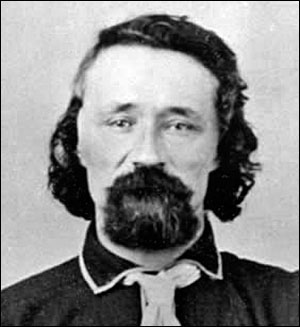John F. Grant (1831–1907)

John Francis Grant was the first person to settle in the Boyne area for agricultural purposes. He was the son of Richard Grant, who was a fur trader with the North West Company and later Chief Factor with the Hudson’s Bay Company. His Métis mother, Marie Anne Breland, died when John was two and John was raised by family in Quebec. He later joined his father in Idaho, where he established a large cattle ranch. His home in Deer Lodge, Montana, is a historic site.
In 1867, Grant moved to Red River, following the Missouri Trail northward. He brought his horses and many Métis followers. Grant established a cattle depot on SW 2-7-4w, homesteaded NE 28-6-4w, received W ½ 27-6-4w as a military grant and later purchased NE 30-6-4w. Grant opposed Louis Riel. As a consequence, he was denied a position on Riel’s provisional council and was briefly imprisoned.
Grant built a large home on NE 28-6-4w, similar to his Montana home. In addition to his cattle operation, he tilled the soil, raised the first wheat in the district and operated the first water-powered sawmill and shingle mill in the area. Having an Indigenous wife and Métis followers subjected Grant to the prejudice of the Protestant settlers who soon arrived to homestead in the Boyne area. Animosity arose between the Ontario Orangemen such as Samuel Kennedy and local Métis over land claims and in reaction to the Riel insurrection. In reaction to this antagonism and possibly because of financial problems, Grant moved his family closer to St. Daniel. In 1891, he moved again to ranch north of Edmonton where he died in 1907.
Grant’s autobiography, “A Son of the Fur Trade: The Memoirs of Johnny Grant”, [reviewed on the Manitoba Historical Society website] provides a fascinating insight into his own colourful life as well as the lives circa 1870 of other Métis in this area, in Manitoba and the West.
